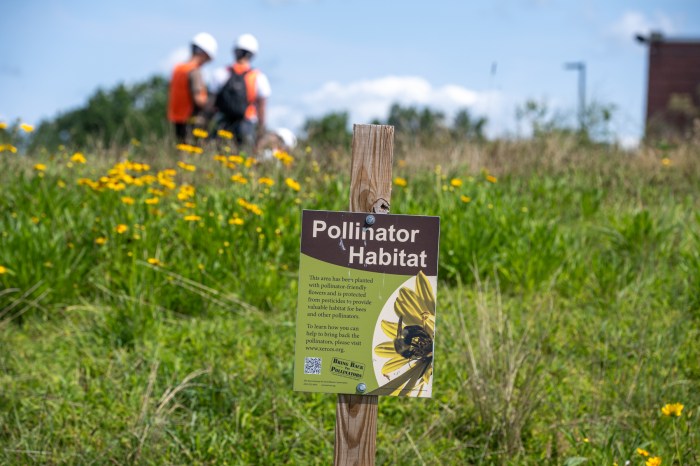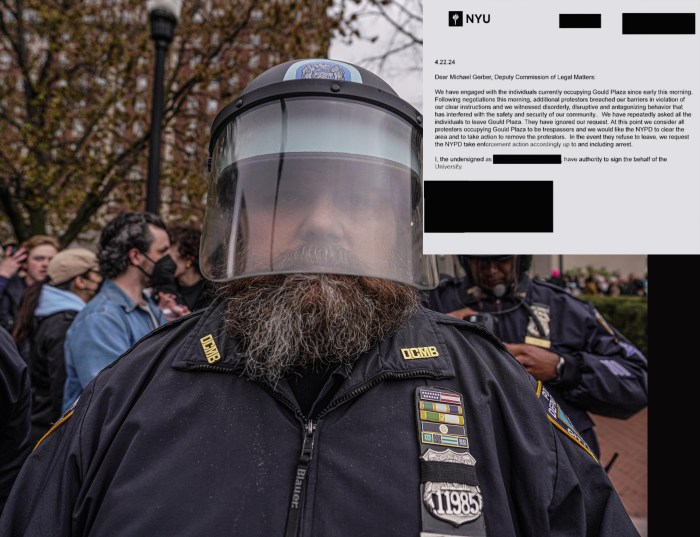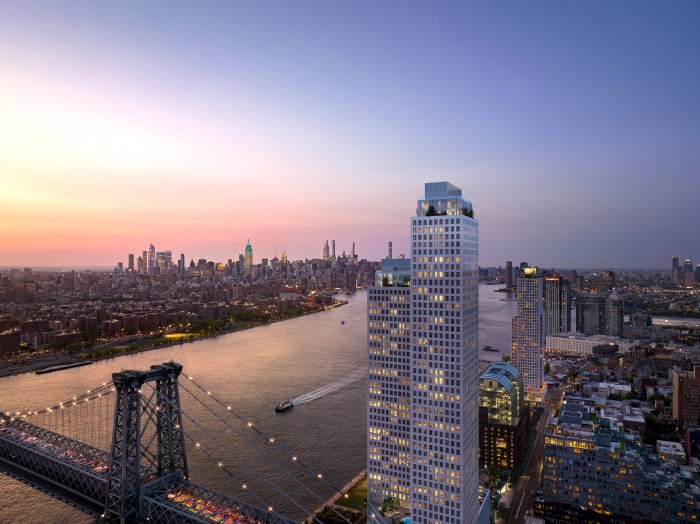BY KAITLYN MEADE | The agency coordinating construction at the World Trade Center and nearby sites is in its last year of operation as the work winds down — but predicts mid to high levels of Downtown construction through 2016.
Lower Manhattan Construction Command Center (L.M.C.C.C.) officials are forecasting widespread public works and private development, resulting in over 2,600 units (and this is a low estimate) of residential housing in the next four years.
Yet the Command Center is not planning to continue beyond its three-year extension to the end of 2013.
“At this point we have every reason to believe we will sunset at that time [Dec. 31, 2013],” said deputy executive director Robin Forst, who sees it as an accomplishment of the bulk of the work the agency was created for.
Despite that, the community board will be sorry to see them go, said Michael Levine, C.B. 1′s director of planning and land use.
“They’ve done a wonderful job coordinating traffic flow. They’ve been indispensable to the rebuilding process in Lower Manhattan.”
He also said that while Downtown construction might not be on the scale of years past, it will certainly not go away. “We have been asking every year for their continued funding, and we plan to keep asking,” he said.
Originally established in 2005 to coordinate W.T.C. construction by Port Authority as well as projects from the Metropolitan Transportation Authority and state Department of Transportation, the organization has begun to keep track of a wider range of activities as Downtown construction decentralizes.
There was an agency realignment in 2011, said Joe Simenic, acting executive director of L.M.C.C.C.
“We sort of looked back and said, ‘hey,’ the World Trade Center site and Fulton St. Transit Center and some of the other state projects have come to a point where focus really needs to be more about offsite activity, the private building projects throughout Lower Manhattan, and the other city-based infrastructure projects,” Simenic said at a Feb. 7 meeting of C.B. 1’s Planning Committee.
It is the Command Center’s job to coordinate construction of permitted projects, monitor air quality and noise levels around Downtown using four stationary and several mobile units, and connect to the community.
The good news: Lower Manhattan is recovering from Sandy slowly but surely, and the hazards of diesel generators and water pumps are rapidly diminishing.
“For the most part, we’re returning to some semblance of normalcy in terms of where we were before the storm,” he said.
Their numbers show a constant use of recovery equipment throughout November and December, but a third assessment in late January showed a marked decrease. Area generators, for example, dropped from 136 in November to 52 by the January assessment.
We’re also returning to “pre-construction levels” of air quality in the greater Downtown area, he said. There were only seven instances air quality exceeding the mandated limit out of 626 readings in the last half of 2012 and only six noise exceedences, though he cautioned that the state Department of Environmental Conservation may have different levels for the last half year because they placed their equipment closer to Sandy recovery machinery.
If Lower Manhattanites expect a decrease in construction, however, they may be disappointed. Instead, numerous projects in the Financial District and Tribeca look to be the next construction-bound zones.
Especially of concern to the Planning Committee was the projected street repair work at South St. and Peck Slip that would take place at the same time as the Economic Development Corp.’s expected Pier 17 overhaul, construction of dormitories at 33 Beekman St. and continued work on the Peck Slip School in 2014.
The predicted timeline for Pier 17, said C.B. 1’s Levine, “is for them begin fall or spring of this year bringing them into spring of next year.” The heavy construction around the pier will clog the area with equipment and large trucks. Combined with street closures and other large area projects, traffic flow may be impacted.
“That will make the east side virtually impassible at many points,” said committee member Tammy Meltzer.
It was a surprise for many of the members to see how much large scale development will be going on residentially in coming years, Levine noted.
At least 2,630 new housing units will be built in the next 4 years, according to the Construction Command Center, who warned that it included only those projects with some kind of permit. These units can range from studios to two- or three-bedroom apartments, meaning a significant rise of population along with family size.
“We’re probably talking about 7,000 additional people at a minimum in Lower Manhattan by 2020,” said Levine.
On top of that, over 2,400 hotel units will also open, with about 1,000 estimated for 2014 alone. The committee reflected that there is a pressing need for underlying infrastructure to support expected population increases, such as more schools and transportation options.
“We’re interested in both aspects of this,” said committee chairperson Jeff Galloway, “One is the disruption and the coordination which is within your jurisdiction, but we’re equally concerned about what happens to the community when people move into all of these units and how it impacts the infrastructure, in terms of schools and other things, as well as the beneficial effects of hopefully reviving retail and various other things that would bring amenities to the community that we’ve been seeking for a long time.”

















